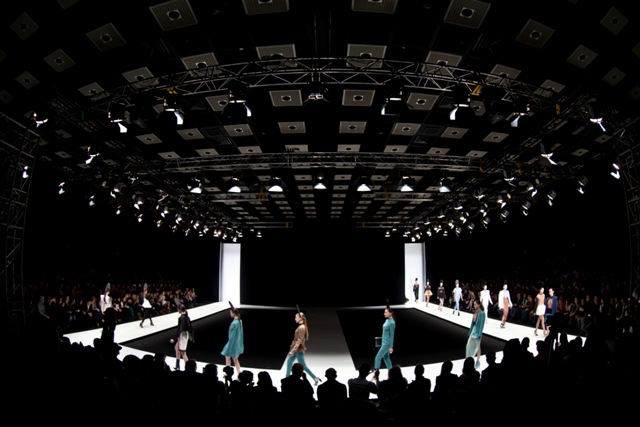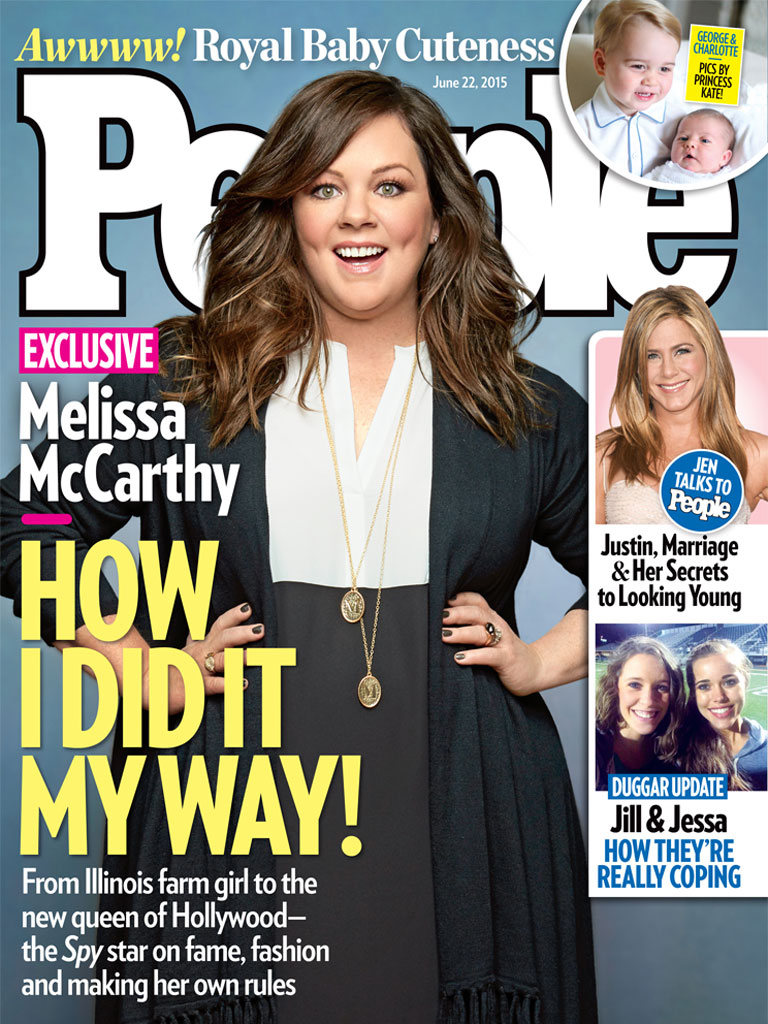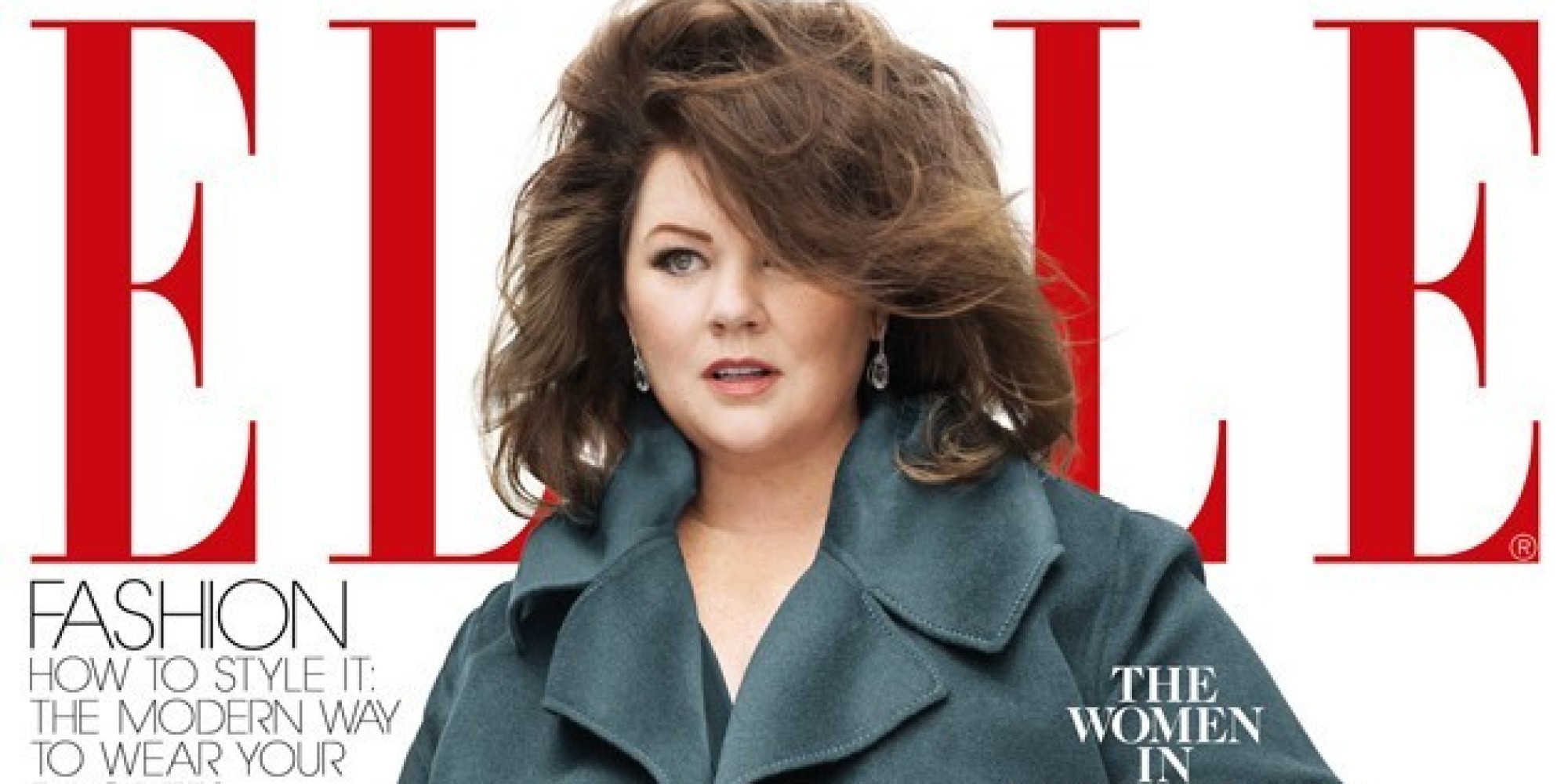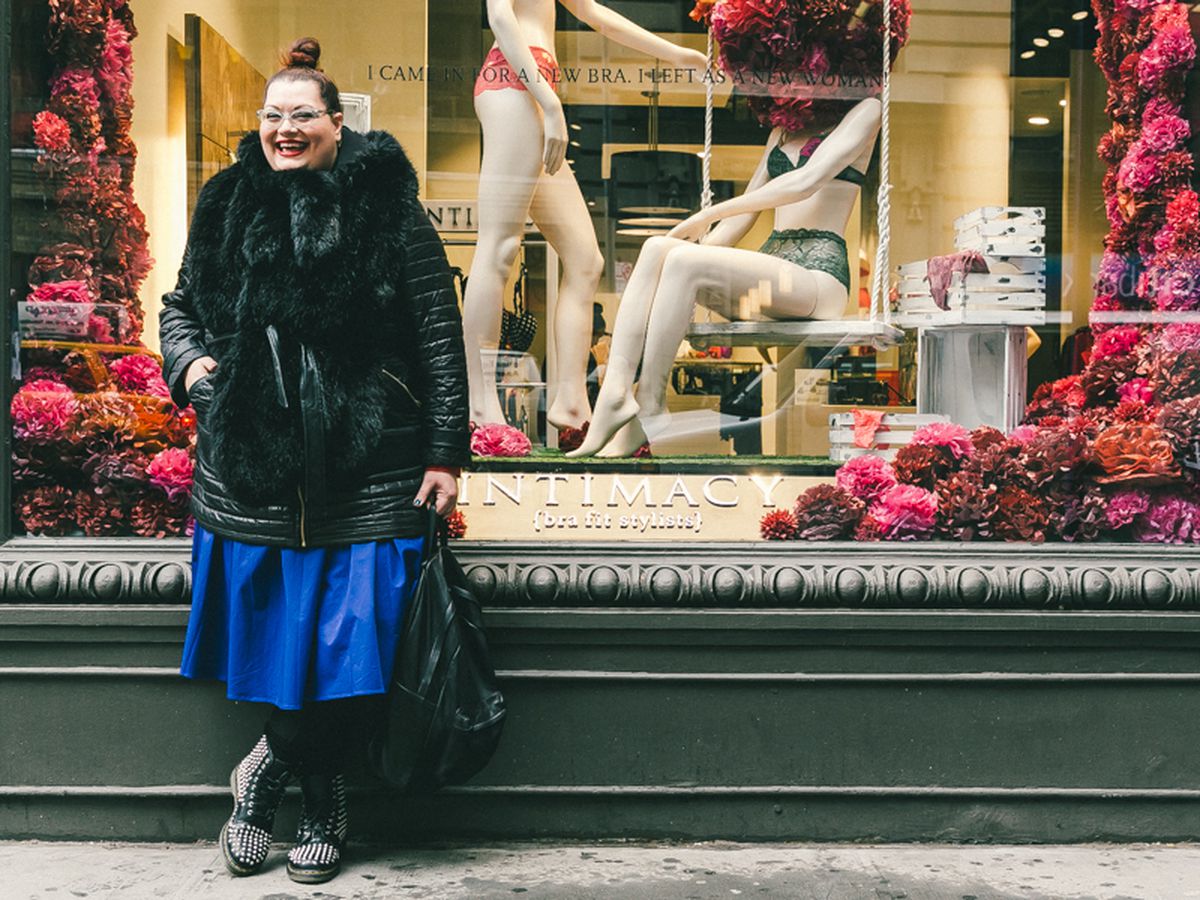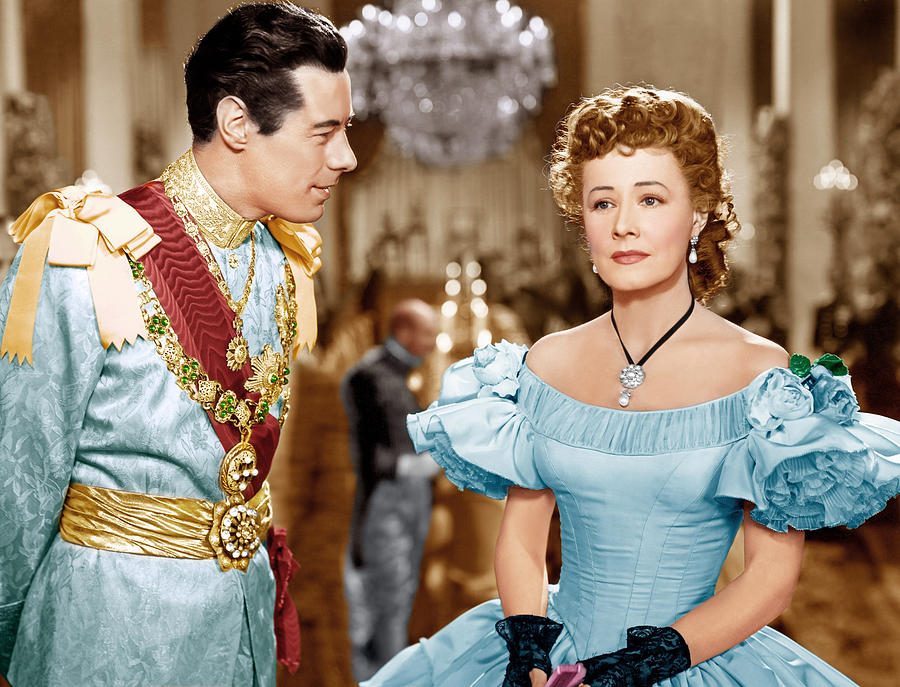As a size 16 in Omaha, Nebraska, Hannah Olson often found herself
with no other choice than to sew her own clothing in high school. There
weren't any plus-size boutiques in her area, and the things that did fit
her at local department stores were much too frumpy for a stylish
teenager.
She taught herself how to sew and used online resources
like Pinterest to learn more complicated skills. When family and friends
began to make personal requests for custom pieces, Olson started her
own fashion line,
Hannah Caroline Couture.
The 19-year-old is now a junior at the University of Nebraska at
Omaha. On the side, she runs her company as an e-commerce venture and
fills orders for proms and weddings; she estimates she makes around four
pieces a month. She is taking business classes at school in hopes of
figuring out how to build a profitable business that can exist
long-term.
"There really aren't options for a girl like me in the
plus-size areas of department stores, but I don’t think the industry is
waiting any longer for traditional stores to carry the clothes we want,"
Olson says of her experience as a plus-size consumer. "These days, we
go straight to the designer where we can build relationships and get
better deals online."
And as a designer, she puts it this way: "It isn't necessarily a bad
thing that department stores aren’t going to discover a line like mine
because the need is there, whether or not they see it. I’d rather work
directly with my customers."
When anyone talks about the plus-size fashion industry—designated as
size 14 and up—the first thing that’s mentioned is opportunity. The
market is valued at $17 billion, NPD chief analyst Marshal Cohen notes,
though it's actually closer to $18 billion when the juniors segment is
factored in.
But with the market’s prospects come plenty of shortcomings. Many
plus-size women feel misrepresented and even disrespected when they shop
for clothing. Despite the fact that 65 percent of American women are
considered plus-size, plus-size fashion is still considered a niche
market and treated as such by traditional retailers.
Trend-focused stores like Zara, Intermix, American Apparel, and Urban Outfitters don’t carry plus-size clothing,
while
Forever 21 and H&M offer just a tiny portion of their ranges in
larger sizes. Department stores often also have sad excuses for
plus-size sections.
"Plus-size has never been given respect," notes Sarah Conley, a 32-year-old
plus-size fashion blogger
living in New York City. "The clothing is always shoved next to
maternity or sale, and is often moved around stores to make room for
seasonal or beachwear. Even a store like Nordstrom, that is known to
carry lots of plus-size lines, doesn’t carry options at all their
locations."
The tide is turning, albeit slowly, with certain retailers giving the plus-size industry
more thought in recent years. ModCloth expanded into plus-size in 2012, Target launched its own plus-size line
Ava & Viv earlier this year, and J.C. Penney started making a
lookbook for plus-size shoppers a few months ago. Despite these strides, plus-size insiders are far from satisfied.
"I made it to Target a few weeks after the Ava & Viv line
launched, and it was just so sad," says Pamela Nanton, a designer who
started her own plus-size brand,
Ply Apparel,
a year and a half ago. "The stuff looked great and sold out at first,
but a few weeks later, it was just folded on tables and wasn't out on
display. These are little jabs to the customer. Stores need to start
doing these things with more thoughtful execution."
It’s for this reason that a crop of independent plus-size businesses
have risen to the occasion. Last year, former employees of The Limited
took over
Eloquii (which the company had
shut down) to transform it into a
freestanding brand. Gabi Gregg, the blogger behind
GabiFresh, launched her own swimsuit line, while blogger Tanesha Awasthi debuted a fashion-forward label on her site,
Girl With Curves. Former model and blogger Aimee Cheshire started an online plus-size boutique,
Hey Gorgeous, in 2013, and designer Ayanna Wu received lots of
attention last month after launching her minimalist brand,
Mei Smith.
As Cohen of NPD explains, "How many times can a customer be insulted by
the same store before they decide they want to give their business to
people that actually put them first?"
Gregg has just released her third
swimwear collection,
and while several e-commerce businesses reached out to her (she
currently sells it on Swimsuits for All), she has never been contacted
by legacy retailers. She assumes this is because her suits are deemed
too bold by conservative stores that still assume plus-size women want
to cover up at the beach. This doesn’t bother her, she says, because she
never needed those places to succeed in the first place.
"I’m planning on starting my own fashion line eventually, and it’s
only going to be e-commerce," she says. "People always ask what stores
my bikinis are in, and when I say none, they think they must not be good
enough to be stocked in stores. But as a business decision, it just
makes more sense to go straight for e-commerce."
Many designers are creating their own websites equipped with
small e-commerce operations to sell their clothing. There are also sites
like
Hey Gorgeous and
FullBeauty that stock a variety of indie labels, though these kinds of multi-brand retailers are few and far between.
"Before sites like FullBeauty opened, there was no place to sell,"
says designer Jessica Svoboda. "The problem is that there is limited
distribution in the plus-size industry. You have maybe ten boutiques in
the entire country that would sell your clothing, and you used to have
to start by being in ten doors at Nordstrom to actually make money."
"Nobody else wanted to carry plus-size," she continues. "They maybe said
they did and would stock one size up, but no one was interested in
catering to this market. There’s no place for a plus-size designer to
grow, and at this point, the customer has already been trained to shop
online. Until there are more retail outlets and more places for
designers to show their clothing, they are going online—there is nowhere
else to sell."
With so many independent designers rushing to get their clothing
online, there is fear that it's all too easy to get lost in the mix.
This is why many in the plus-size space turn to industry events for
exposure.
Olson, for example, flew to New York City last week to show her collection at
Full Figured Fashion Week.
Now in its seventh year of operation, FFFWeek brings together
designers, models, and bloggers for runway shows and networking
sessions.
FFFWeek doesn’t feel like your standard fashion industry affair—and
it’s not just because attendees are actually excited to be there,
shouting and clapping excitedly as outfits make their way down the
runway. The women who attend FFFWeek are diverse not only in size, but
also in race and style. They approach each other with genuine enthusiasm
and engage in curious chatter whether they be total strangers or
longtime friends.
Gwen DeVoe, a former model who works at Scholastic, started
FFFWeek. Last year she made an announcement that 2014 would be the
event's final run, but after snagging a sponsorship from Fruit of the
Loom, she went full steam ahead with plans for FFFWeek 2015.
"I respect its position in that it started a big conversation and
really has brought a lot of attention to the market," says Conley. "It’s
all built on this social revolution that’s happened in the plus-size
industry. Now you have everyone standing up and saying, ‘Enough is
enough.’ If traditional fashion leadership is opposed to this market,
it’s going to be self-validated and self-affirmed."
FFFWeek has gotten plenty of attention over the years; last year, the
New Yorker proclaimed
it was "reinventing plus-size style." But among all the passionate
attendees, there is one group that's not represented: buyers.
Many who have attended FFFWeek in the past note that no one with
actual purchasing power attends the event; they also lament a lack of
investors looking to back brands. Admits Chrystal Jackson, owner of
Atlanta’s
Thiq Boutique, "This event is more about the camaraderie than buying."
"It’s all very limiting and a little bit disappointing," says one
plus-size business owner who asked that her name not be published. "It
isn’t done with business sensibility for the brands, and on top of that,
you don’t have big money coming from important backers like the CFDA.
Instead, you have money coming from people’s own pockets. You won’t see
important buyers sitting in the front row. It’s limited in what it can
do when it’s homegrown."
Still, FFFWeek has helped many designers gain the confidence to start
their own lines. The week's kickoff is a press event held at a loft 17
stories above cell phone case
kiosks and wholesale
garment dealers in midtown Manhattan. A group of women swarm some 20
tables to swap businesses cards and chat about merchandise.
In one corner,
Just Curves shows off the latest from its fitness apparel collection, a spandex bodysuit
. A few tables down, the CEO of e-commerce site
Qurvii
gives her personal take on tunics to a stylist; next to her, a designer
explains the name of her brand for the fourteenth time (spelled
I’ME, it's pronounced I'm Me; "Why be anybody else???" is its tagline).
None of the designers seem to mind that investors and buyers are nowhere to be found. Here, it's about community and connection.
"It’s hard to get discovered by customers when there’s so much
online," says Olson. "But there’s a lot of marketing that can be done at
FFFWeek. I want to meet fashion bloggers in person and partner with
them so they can do reviews and things like that."
This is the part of the reason bloggers Chastity Garner Valentine and
CeCe Olisa decided to start a plus-size event of their own,
The Curvy Con,
which coincidentally also took place this past weekend in New York
City. The event welcomed 500 paying guests from across the country to
listen to panels and shop at a curated market.
"The plus-size community now is online—we all follow each other and
talk to each other online, but it’s really rare to have us all in the
same place at the same time," Olisa says. "It’s a positive and uplifting
atmosphere," adds Conley. "You meet people who are excited about the
same things you are, experience the same frustrations that you do."
Garner Valentine admits it was difficult getting The Curvy Con the
sponsor money it needed this year; Monistat ended up being its top
patron, pushing chafing relief powder gel at the first panel of the day.
Garner Valentine says she’s happy plus-size designers are venturing out
on their own because she believes legacy brands will not give shoppers
what they actually want.
"It’s always an uphill battle to deal with brands. It’s almost like starting from the ground up," Olisa
says. "The other thing to consider is that these brands have done a
good job conditioning plus-size girls to feel like they don’t deserve
anything beyond what they're given. They’ve made us believe we deserve
to have our clothing shoved in the back, or in the basement, where
16-year-olds and 42-year-olds have the same options."
Mariah Chase, CEO of Eloquii, adds that it’s only natural the
plus-size industry is taking matters into its own hands through direct
sales—after all, that's the way successful startups like
Bonobos and
Glossier have made their mark in recent years.
"This is about the consumer finally stepping up to find a better
experience," Chase says. "When a straight-size designer starts, she can
present to different showrooms, show at fashion week, or pitch herself
to any store. These options aren’t available for plus-size. Between
finding space and finding investors, it’s hard, and until the
conversation in fashion is opened entirely, you're left with
direct-to-consumer."
This new direct-to-consumer model seems to have solved at least some of
the problem of getting product to shoppers, but the plus-size business
faces other challenges like getting customers to commit to higher price
points. Hey Gorgeous's Cheshire
told Racked
earlier this year that the plus-size customer "hasn't been conditioned
to enjoy fashion in the same way as her straight-size sisters. It's
always been, 'I'm going to lose 20 pounds,' so they'll hold off on
shopping."
"There’s still a lot of education that needs to happen," echoes
Conley. "It’s going to take a lot of coaxing to bring her back into the
fold to be able to buy that $300 dress. Plus-size women feel beaten down
by the experience of shopping, so when you can’t find something that
makes you feel good, you settle for something okay and get used to
buying things for utility instead of fashion. That’s where the price
sensitivity comes from."
Ply Apparel designer Nanton knows about that sensitivity
firsthand; she says women are hesitant to invest in her $1,900 dresses
and $600 skirts. She’s dressed celebrities like
Orange is the New Black’s
Adrienne Moore for the red carpet, but still struggles to convert
customers who are used to buying "cheap, bodycon dresses." And while
shoppers think she’s overpriced, upscale department stores won’t even
consider her clothing.
"We’re kind of like the redheaded stepchild," Nanton’s husband and
business partner Lamarr says. "High-end retailers like Barneys and
Neiman Marcus aren’t catering to this customer. We’ve had meetings with
Barneys buyers, and they say they love the product but don’t have room
for it. But we don’t have competition because we aren’t creating cheap,
Lane Bryant looks! No one is used to buying higher price points. We’re
stuck in the in-between space."
As a response, the Nantons are launching a lower-priced line,
PLY428,
later this month. Still, Lamarr says the brand’s ultimate goal is to
show the shopper she can buy "timeless pieces she can have for a
lifetime."
"This market has an infinite amount of Target customers, but we
see ourselves as more for the Bloomingdale's, Neiman Marcus customer.
We might end up needing those stores to show the differentiation," he
says. "Everyone will always talk about the potential of the plus-size
industry, but it’s hard when there are a lot of customers but not enough
retail outlets."
Eden Miller, the designer behind
Cabiria, points to another problem in the industry, particularly when it comes to blogger-backed brands.
"I don’t think quality has been established," she admits. "Everyone
is trying to run as fast as they can to put anything out. The entire
industry has been swerving. They think a following is enough to
capitalize on, as opposed to really believing in a product, so there’s a
dearth of quality. It seems like everyone is designing for themselves,
and I’m seeing the same thing over and over again. They say it’s for
trend purposes, but these online stores have created an unrealistic
expectation of how a garment should look, feel, and cost."
Thiq Boutique's Jackson is one of the few plus-size buyers in
the market. She agrees that this new wave of businesses can be
underwhelming.
"It’s not that we don’t want to give a designer a chance," she says.
"If we see something with potential, we’ll reach out to that designer
and see if there’s opportunity, but we haven’t seen enough versatility.
These designers make pieces with only one style in mind."
Another plus-size boutique owner, who wished to remain anonymous,
says she decided to stop working with independent plus-size designers
entirely unless they're backed by major investors because many fledgling
brands can't hold up their end of the deal: "A lot of these designers
have good intentions, and certainly the passion is there, but there
isn’t enough profit margin for them to make the same garments I request
again and again."
Miller ultimately believes that most in the market won’t make it.
With little visibility and paltry profits, brands will not be able to
survive without big money; bloggers and designers will have to partner
with big companies to really succeed.
"Those that are well-funded will have to team up with those who are
well-followed," she says. "Indie brands won’t make money, but they can
leverage their street-level experience to actually make a difference.
I’m not saying brick-and-mortar is the future, but the greater market
cannot sustain all these players without something more."
http://www.racked.com/2015/6/24/8833719/plus-size-fashion-brands








